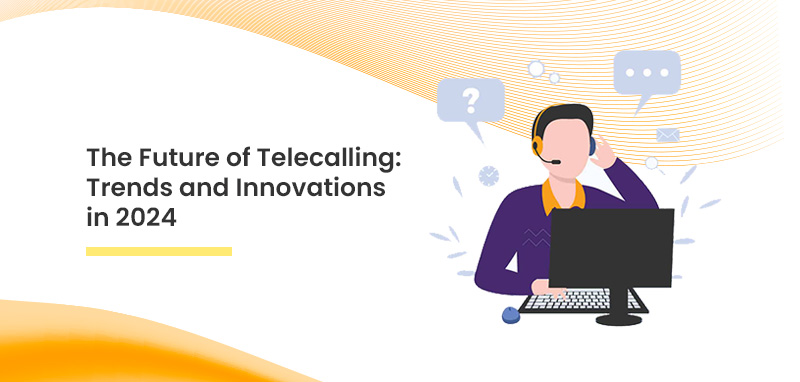The Future of Telecalling: Trends and Innovations in 2024
Telecalling, once seen as a traditional sales and customer service tool, is undergoing a remarkable transformation in 2024. As technology advances and customer expectations evolve, telecalling is adapting to remain relevant, efficient, and customer-centric.

AI and Automation in Telecalling
One of the most significant innovations in telecalling is the integration of artificial intelligence (AI) and automation. AI-powered systems are revolutionizing the way telecallers interact with customers. These systems can now assist in answering routine queries, filtering and qualifying leads, and even predicting customer behavior based on past interactions. Automated dialers, for example, eliminate the need for manual dialing, enabling telecallers to focus on high-value tasks rather than repetitive ones.
AI-driven voice assistants are also becoming more advanced. They can handle preliminary conversations with customers, gather information, and pass it on to human agents when needed. This ensures that telecallers can spend more time engaging in meaningful conversations rather than dealing with mundane tasks. AI can analyze customer tone and sentiment during calls, providing real-time feedback to agents, which helps in adjusting communication strategies to better meet customer needs.
Personalization Through Data Analytics
In 2024, personalization is no longer a luxury—it’s a necessity. Customers expect brands to know their preferences, needs, and pain points. This is where data analytics plays a crucial role in telecalling. By leveraging customer data, businesses can create highly personalized telecalling experiences.
CRM (Customer Relationship Management) tools, integrated with AI and big data analytics, allow telecallers to have a complete view of a customer’s history with the company. This includes previous interactions, purchase history, and even preferences gathered from social media activity. Armed with this information, telecallers can engage in personalized conversations, making customers feel valued and understood.
Remote Telecalling and Cloud-Based Solutions
The COVID-19 pandemic accelerated the shift to remote work, and in 2024, remote telecalling has become the norm for many businesses. This shift has been supported by cloud-based telecalling software, which allows telecallers to work from anywhere while maintaining access to all the necessary tools and customer data.
Cloud-based solutions offer several advantages. They provide scalability, enabling businesses to easily adjust their telecalling teams based on demand. They also enhance collaboration among team members, even when working remotely, by offering real-time access to shared data and communication tools.
Voice Biometrics and Enhanced Security
In the age of increasing cyber threats, security has become a top priority for businesses, especially those that handle sensitive customer information. In 2024, voice biometrics is emerging as a cutting-edge solution to enhance security in telecalling.
Voice biometrics uses unique voice patterns to authenticate a caller’s identity, reducing the need for traditional security questions. This not only speeds up the verification process but also provides a more secure and convenient way to handle sensitive customer transactions. Telecallers can now verify a customer’s identity within seconds, providing a smoother and more secure experience.
Human-Centered Approach with AI Collaboration
Despite the rise of AI and automation, the human element remains irreplaceable in telecalling. The future of telecalling in 2024 lies in finding the perfect balance between human interaction and AI collaboration. While AI handles routine tasks, human telecallers are essential for building rapport, understanding complex emotions, and providing personalized solutions that machines cannot.
Conclusion
The future of telecalling in 2024 is an exciting blend of technology, data-driven strategies, and human connection. AI, data analytics, omni-channel communication, and cloud-based solutions are redefining how telecallers engage with customers, making processes more efficient, secure, and personalized. However, amidst all these innovations, the human touch remains essential in building strong customer relationships. As businesses continue to adapt to these trends, telecalling will remain a critical component of customer engagement and business success in the years to come.
